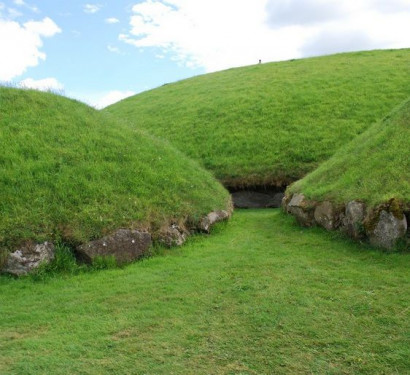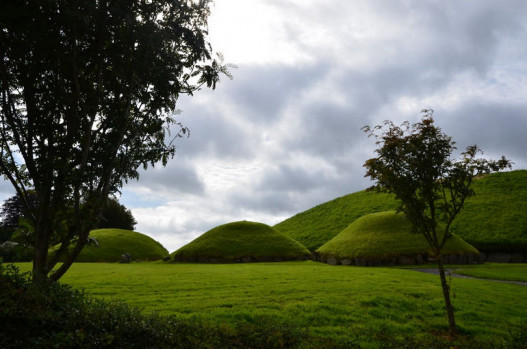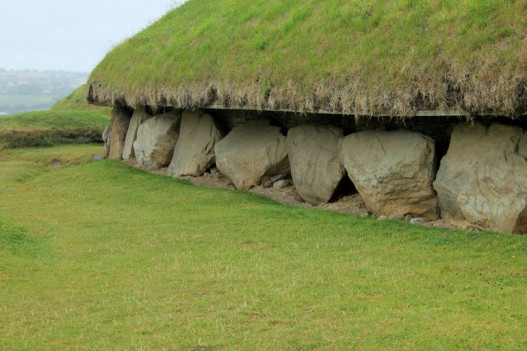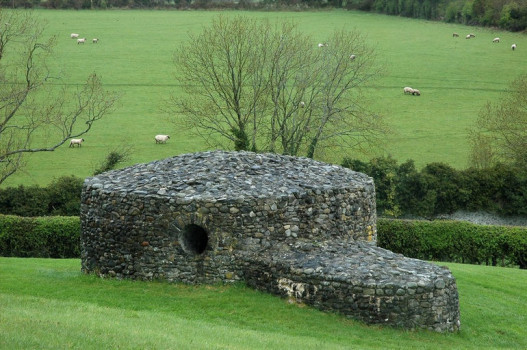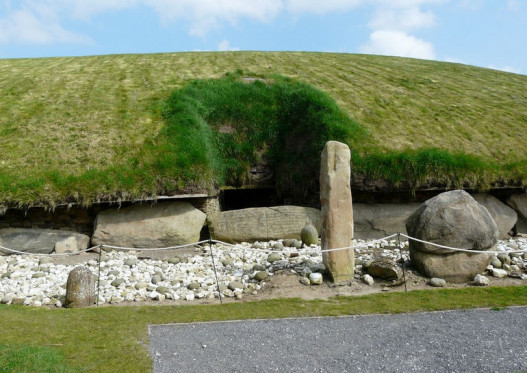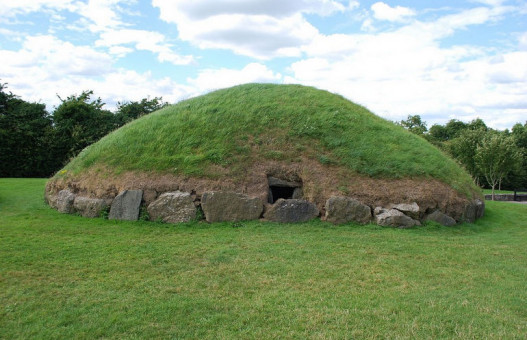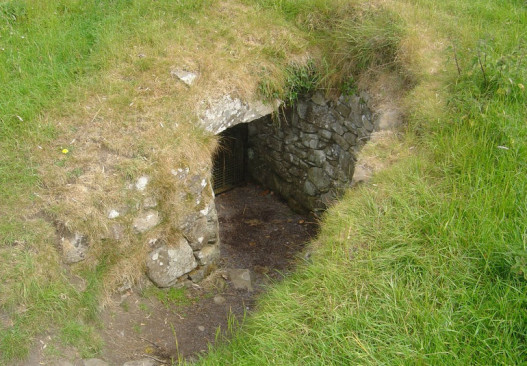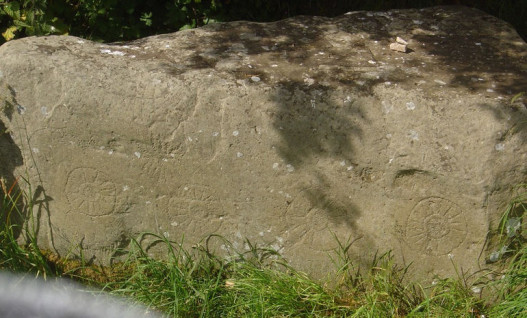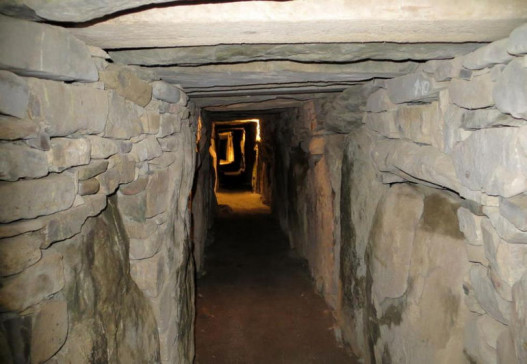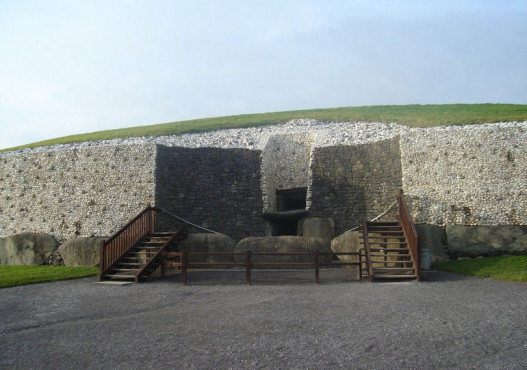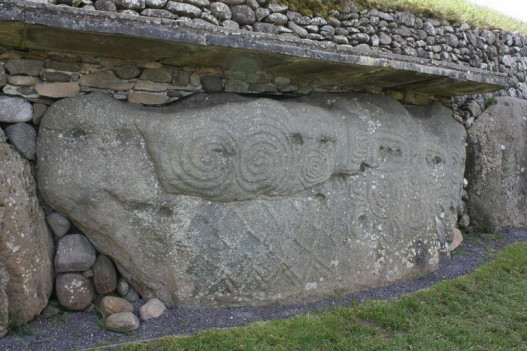The three main prehistoric sites of the Brú na Bóinne Complex, Newgrange, Knowth and Dowth, are situated on the north bank of the River Boyne 50 km north of Dublin. This is Europe's largest and most important concentration of prehistoric megalithic art. The monuments there had social, economic, religious and funerary functions.
Bounded on the south by a bend in the River Boyne, the prehistoric site of Brú na Bóinne is dominated by the three great burial mounds of Knowth, Newgrange and Dowth. Surrounded by about forty satellite passage graves, they constitute a funerary landscape recognised as having great ritual significance, subsequently attracting later monuments of the Iron Age, early Christian and medieval periods.
Located about 40 km north of Dublin on a ridge between the rivers Boyne and Mattock, within several kilometres of other prehistoric mounds, the site is part of an area rich in stories of Ireland’s ancient past. Predominantly agricultural at the present time the area has been extensively explored for more than a hundred years by archaeologists and historians, with excavations revealing many features.
The Knowth group, where the earliest features date from the Neolithic period and the latest from the Anglo-Norman period, has produced thirty monuments and sites that figure on the official inventory; these include passage graves adorned with petroglyphs, enclosures, occupation sites and field systems. The Newgrange group is purely prehistoric, with a ringfort, cursus, passage graves and a henge. The Dowth group is similar to that at Newgrange but there is medieval evidence in the form of a church and a castle.
The 780 ha area of the World Heritage property Brú na Bóinne encapsulates the attributes for which the property was inscribed on the World Heritage List. In addition to the large passage tombs of Knowth, Newgrange and Dowth, 90 recorded monuments – as well as an unknown quantity of as yet unrecorded sites – remain scattered across the ridge above the Boyne and over the low-lying areas and floodplain closer to (the present course of) the rivers.
The buffer zone is comprised of 2,500 hectares, the boundary lines respecting carefully mapped views into and out of the property. Since inscription in 1993, views out of the property have been impacted by the M1 bridge crossing the River Boyne to the east of the property; the addition of a third chimney and other structures to the cement factory on the skyline to the east south-east near Duleek; the addition of an incinerator stack to the skyline at Carranstown and a housing development. The ambiance of the ritual centre is vulnerable to such disturbances which could potentially threaten the integrity of the property. The local authority (Meath County Council) has in place planning policies and procedures to deal with applications for developments which may either incrementally or individually have potential impact on the integrity of the World Heritage property.
The archaeological remains on the site, both above and below ground are wholly authentic.
Major excavations have been carried out at Newgrange and Knowth and have been fully published. Many small excavations and surveys have been carried out in the area. The main conservation works have concentrated on the two main passage tombs at Newgrange and Knowth subsequent to the excavations undertaken at these sites. All conservation and restoration work has been carried out by skilled professional staff.
At Newgrange, there has been comprehensive anastylosis of the kerbstones and the revetment wall, though the latter has been curtailed to allow access by visitors. The passage roof was completely dismantled to allow the orthostats to be returned to the vertical, with the introduction of reinforcement, and a cowl has been constructed over the chamber area. The cairn itself has been stabilised by means of thin revetments of cairn stones.
At Knowth, structures from all periods are being conserved. In some passage tombs outer support walls have been built for the burial chambers, involving the use of modern materials such as cement and plastic. Where such new additions are visible they are clearly distinguished in appearance from original materials, but in other cases they are completely concealed.
The restoration work on these monuments, the result of close collaboration between archaeologists and conservation architects, conforms with the principles enunciated in Article 7 of the International Charter for Archaeological Heritage Management of 1990.
